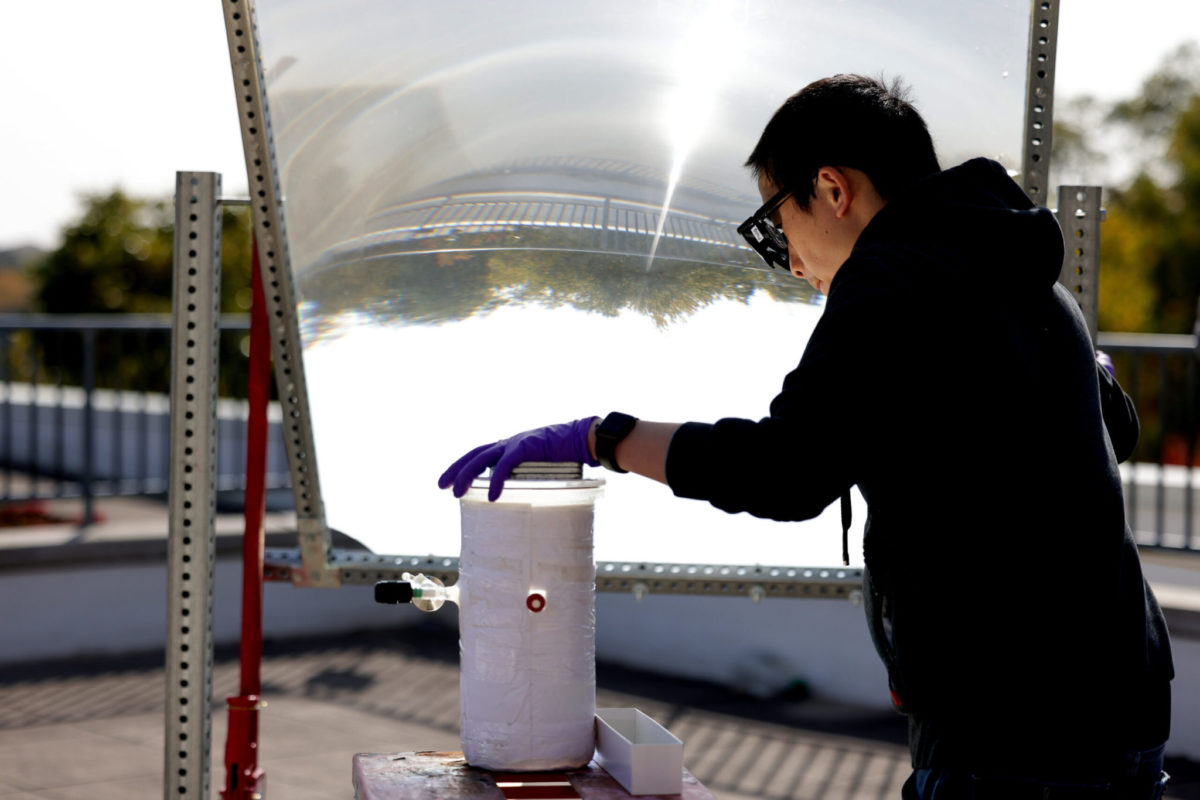From pv magazine global
University of Michigan researchers developed a new photocatalytic water splitting system that is reportedly able to reach a 9.2% solar-to-hydrogen (STH) efficiency.
The proposed system uses the higher energy part of the solar spectrum to split water and the lower part of the spectrum to provide heat that encourages the reaction. The extra heat also allows the hydrogen and oxygen to remain separate, rather than renewing their bonds and forming water once more.
It works in an indoor environment and uses pure water, concentrated solar light, and an indium gallium nitride photocatalyst. The semiconductor catalyst, a forest of nanowires of indium gallium nitride grown onto a silicon surface, is able to become more efficient during use, according to the scientists. The device absorbs photons and converts them into electrons, which are used to split water into hydrogen and oxygen.
The nanowires are peppered with nanoscale balls of metal, 1/2000th of a millimeter across, that use those electrons and holes, positively charged gaps left behind when electrons are liberated by the light, to help direct the reaction.
“A simple insulating layer atop the panel keeps the temperature at a toasty 75 C, or 167 F – warm enough to help encourage the reaction while also being cool enough for the semiconductor catalyst to perform well,” the scientists said.
They claim that the system is nearly 10 times more efficient than other solar water-splitting systems of the same kind. They said that the final cost of hydrogen could fall with a bigger semiconductor.
“We reduced the size of the semiconductor by more than 100 times compared to some semiconductors only working at low light intensity,” said researcher Peng Zhou.
The research group described the system in the study “Solar-to-hydrogen efficiency of more than 9% in photocatalytic water splitting,” published in Nature.
“This temperature-dependent strategy also leads to an STH efficiency of about 7 % from widely available tap water and sea water and an STH efficiency of 6.2% in a large-scale photocatalytic water-splitting system with a natural solar light capacity of 257 watts,” they said.
They claimed that the next challenge is to further improve the efficiency and generate ultra-high purity hydrogen that can be directly fed into fuel cells.
This content is protected by copyright and may not be reused. If you want to cooperate with us and would like to reuse some of our content, please contact: editors@pv-magazine.com.








By submitting this form you agree to pv magazine using your data for the purposes of publishing your comment.
Your personal data will only be disclosed or otherwise transmitted to third parties for the purposes of spam filtering or if this is necessary for technical maintenance of the website. Any other transfer to third parties will not take place unless this is justified on the basis of applicable data protection regulations or if pv magazine is legally obliged to do so.
You may revoke this consent at any time with effect for the future, in which case your personal data will be deleted immediately. Otherwise, your data will be deleted if pv magazine has processed your request or the purpose of data storage is fulfilled.
Further information on data privacy can be found in our Data Protection Policy.